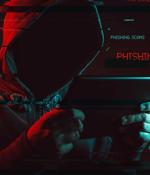Security News

Cybersecurity researchers are warning of ongoing attacks coordinated by a suspected Chinese-speaking threat actor targeting the Afghanistan government as part of an espionage campaign that may have had its provenance as far back as 2014. Israeli cybersecurity firm Check Point Research attributed the intrusions to a hacking group tracked under the moniker "IndigoZebra," with past activity aimed at other central-Asian countries, including Kyrgyzstan and Uzbekistan.

ESET has published details of an advanced persistent threat crew that appears to have deployed recent supply chain attack methods against targets including "Electronics manufacturers," although it didn't specify which. "Victims of its campaigns are located in East Asia as well as the Middle East and include governments, religious organizations, electronics manufacturers and universities," said ESET in a research report published today that names the APT crew as Gelsemium.

Researchers said, is the novel backdoor, which they said has been in development by a Chinese APT for at least three years. A multi-stage chain eventually results in the installation of the backdoor module, which is called "Victory." It "Appears to be a custom and unique malware," according to Check Point.

The FBI on Thursday published indicators of compromise associated with the continuous exploitation of Fortinet FortiOS vulnerabilities in attacks targeting commercial, government, and technology services networks. In early April, the FBI along with the Cybersecurity and Infrastructure Security Agency warned that threat actors had been targeting serious security holes in Fortinet's flagship operating system FortiOS for initial access into victims' networks.

The Federal Bureau of Investigation says state-sponsored attackers breached the webserver of a U.S. municipal government after hacking a Fortinet appliance. "As of at least May 2021, an APT actor group almost certainly exploited a Fortigate appliance to access a webserver hosting the domain for a U.S. municipal government," the FBI's Cyber Division said in a TLP:WHITE flash alert published today.

Researchers at Cybereason say they have discovered an undocumented malware targeting the Russian military sector and bearing the hallmarks of originating in China if not being Chinese state sponsored. One sample was found dropping previously unknown malware, that the Cybereason researchers have now called PortDoor.

A heretofore little-seen botnet dubbed Prometei is taking a page from advanced persistent threat cyberattackers: The malware is exploiting two of the Microsoft Exchange vulnerabilities collectively known as ProxyLogon, in order to drop a Monero cryptominer on its targets. The report noted that Cybereason has recently seen wide swathes of Prometei attacks on a variety of industries, including construction, finance, insurance, manufacturing, retail, travel and utilities.

The U.S. government's Cybersecurity and Infrastructure Security Agency has raised an alarm for a new cyberattack in which both a Pulse Secure VPN appliance and the SolarWinds Orion platform were abused for malicious purposes. Both the Pulse Secure virtual private network appliances and the SolarWinds platform are known targets for threat actors: the former for initial access to an environment, and the latter for performing supply chain attacks.

A spear-phishing attack operated by a North Korean threat actor targeting its southern counterpart has been found to conceal its malicious code within a bitmap image file to drop a remote access trojan capable of stealing sensitive information. Attributing the attack to the Lazarus Group based on similarities to prior tactics adopted by the adversary, researchers from Malwarebytes said the phishing campaign started by distributing emails laced with a malicious document that it identified on April 13.

A sub-group of the 'Molerats' threat-actor has been using voice-changing software to successfully trick targets into installing malware, according to a warning from Cado Security. In recent attacks targeting political opponents, APT-C-23 appears to have taken the spear-phishing to a new level, through the use of voice-changing software to pose as women.